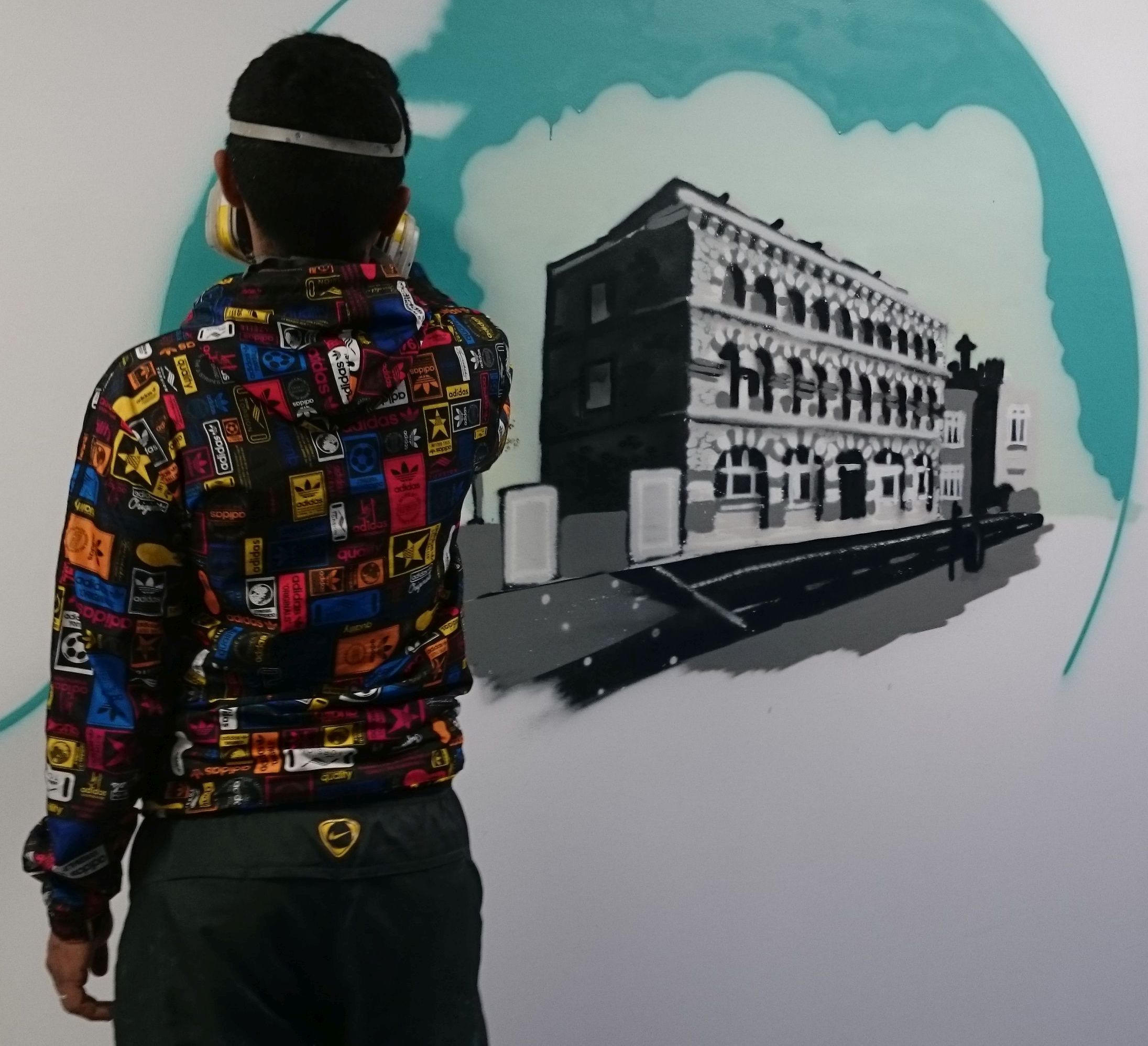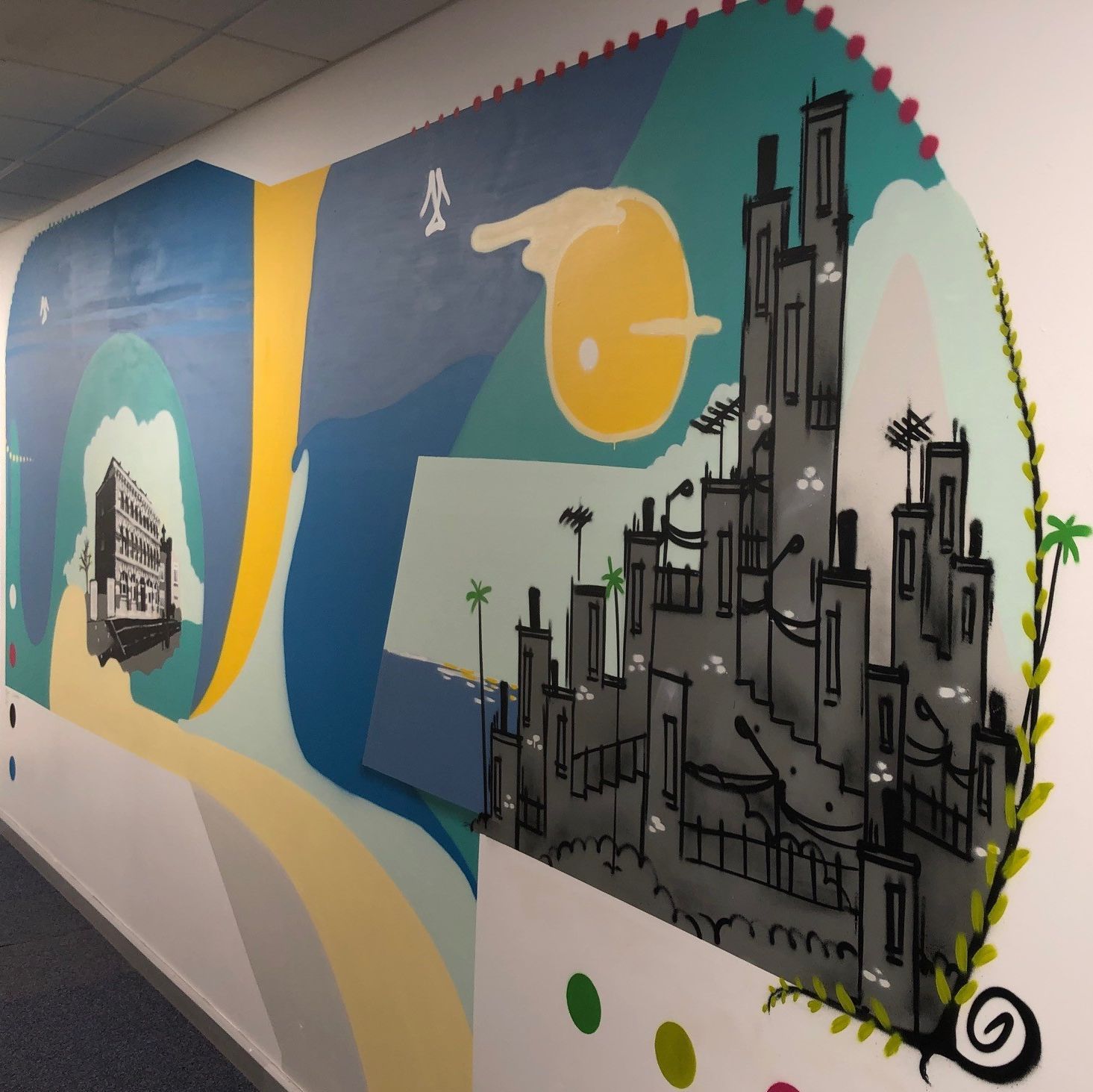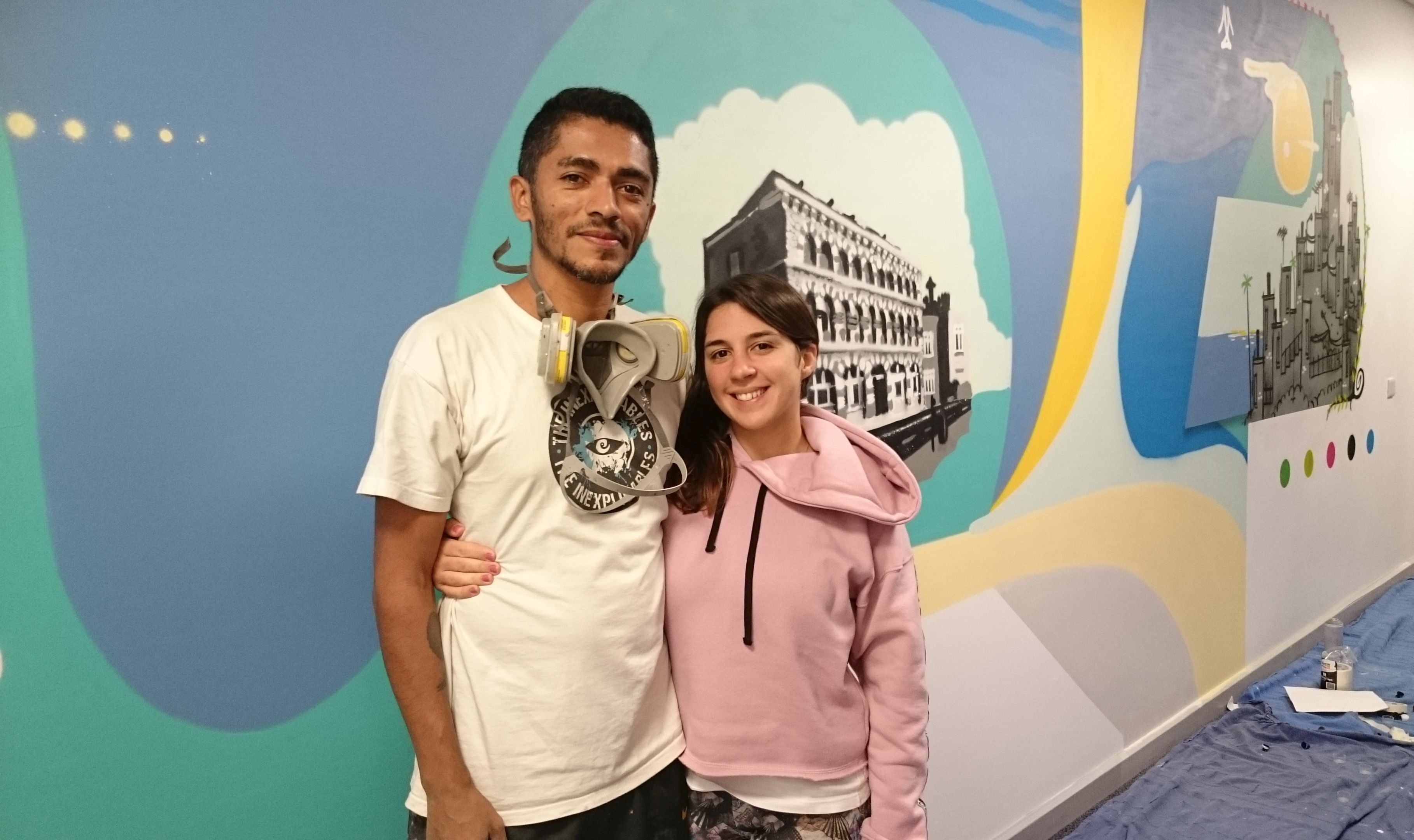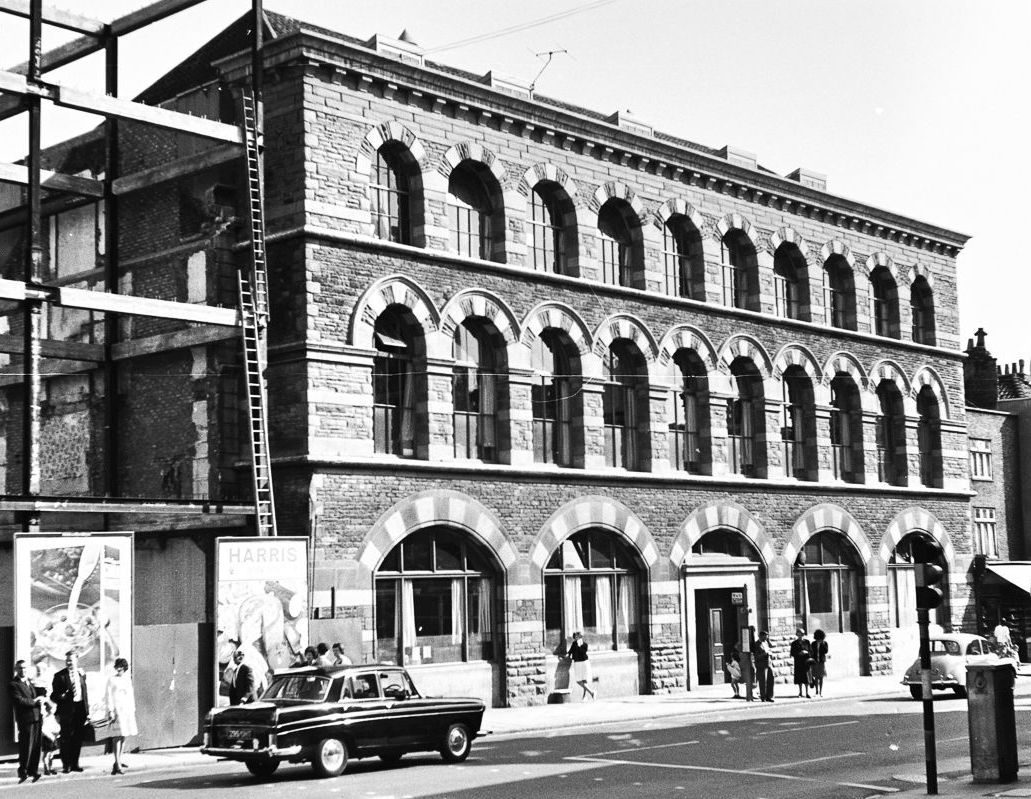Dr Christina Horvath collaborates with Brazilian street artist Leandro Tick to create an original work of art in the Library.
When Brazilian street artist and cultural activist Leandro Rodrigues de Souza, known as Leandro Tick, visited the UK in September 2019 as part of the Co-Creation research project we were keen to introduce him to some of our archival collections.

Leandro lives and works in the favela of Tabajaras in Rio de Janeiro, Brazil. He started painting graffiti in 2001 and, since 2006, he has been teaching street art to children, participating in social projects, and organizing collective art events in the city. He co-founded CALLE, an association that promotes cultural exchange between locals and foreign volunteers, and initiated the Connexion Tabajaras Project to establish an open-air community gallery supported by a team of local guides.
Co-Creation is a four-year project funded by the EU’s Marie Curie/RISE Horizon 2020 scheme that brings together researchers, policymakers, residents, artists, and other stakeholders to ‘co-create’ understanding about urban neighbourhoods in Europe and Latin America. The methodology advanced by the project promotes social justice through an arts-based, participatory approach allowing those involved to share knowledge and experience, acquire transferable skills, form networks, and build cohesive communities.

The international Co-Creation consortium is made up of four universities and three NGOs. Dr Christina Horvath (PoLIS) is a founding member. She leads a team of 20 University of Bath researchers from across the Faculty of Humanities and Social Sciences.
Leandro has been collaborating with the Co-Creation project since 2018, contributing to workshops and arts-based research. His art takes many forms, but he is especially well known for depicting cityscapes, flora and fauna, and people from favelas. We liked the idea of showing him some of the historic photos of urban neighbourhoods in the Library’s Bristol Region Building Record. The artwork you can see on Level 4 of the Library is what Leandro was inspired to paint. It includes some of his characteristic favela buildings and an iconic building in Stokes Croft, an area regarded by some as the birthplace of Bristol’s street art movement.

